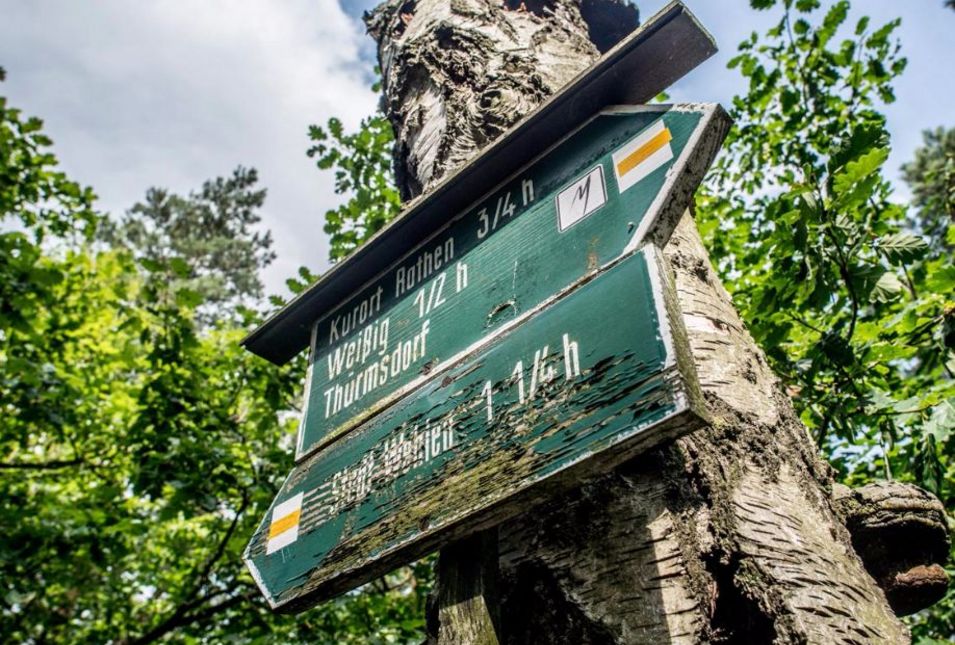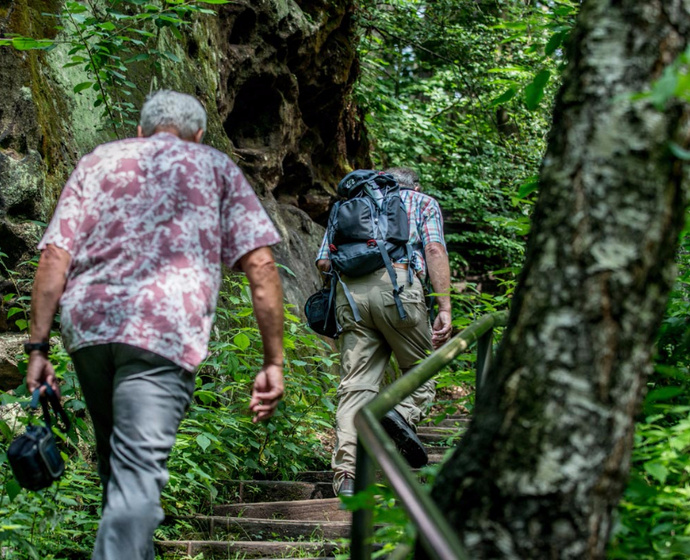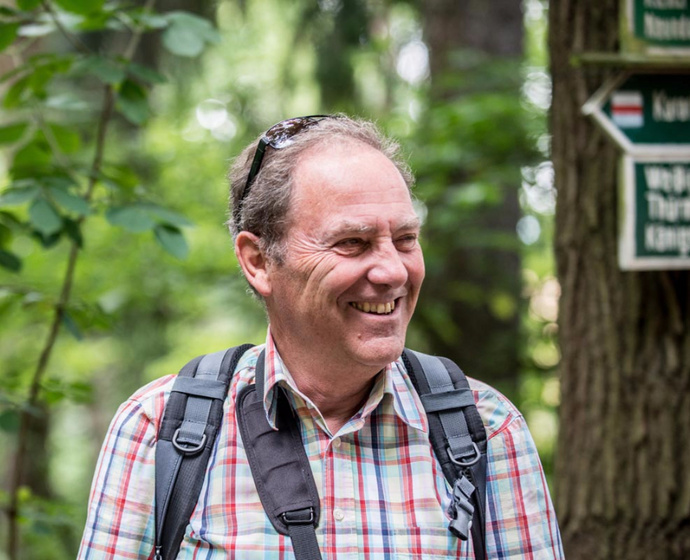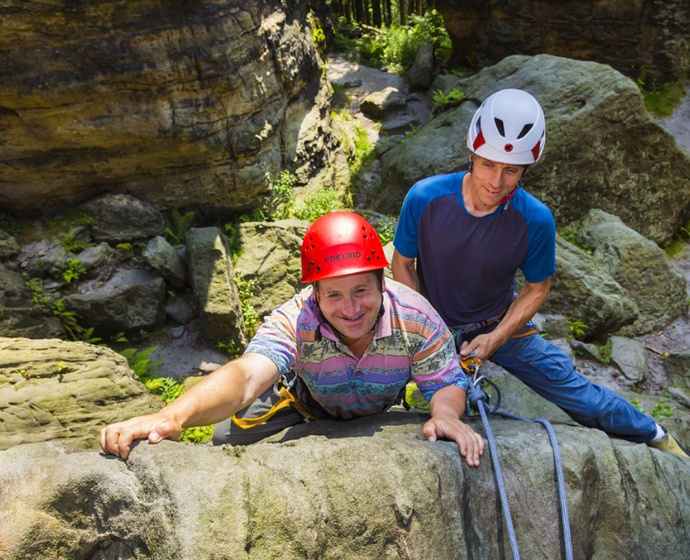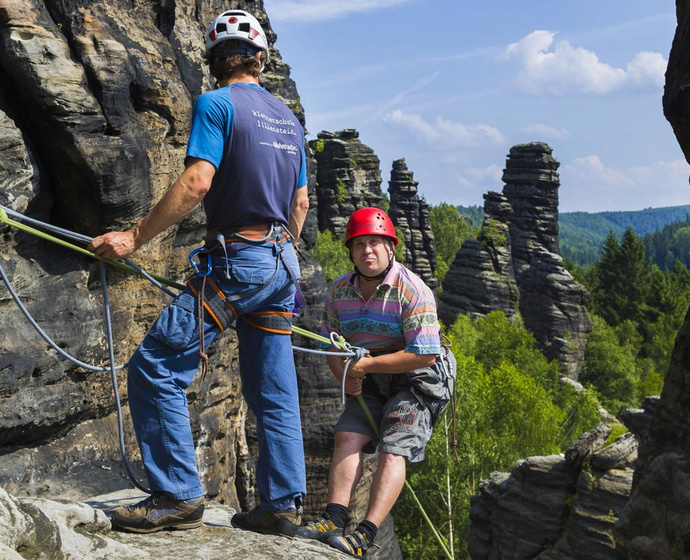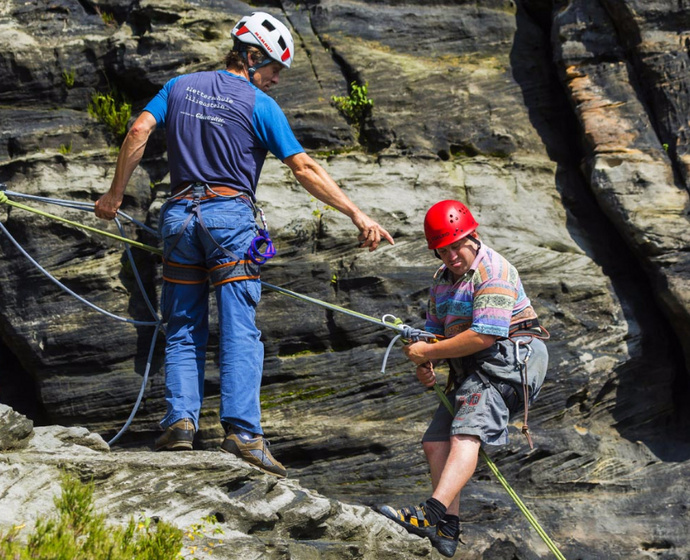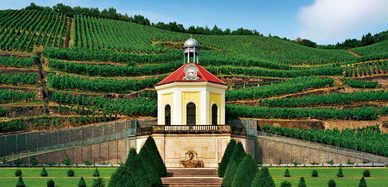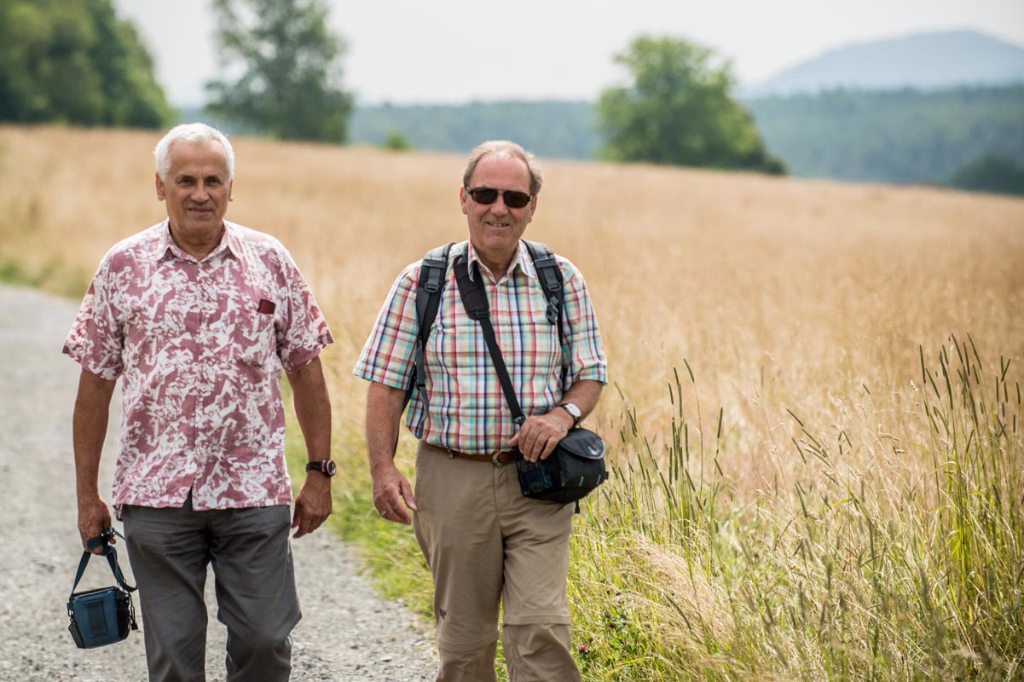
There are countless ways to enjoy Saxon Switzerland and many visitors do just that every year. Local people are committed to maintaining and improving the many opportunities: they monitor the trail network, create new attractions and remove barriers to en
Peter Mildner has to think for a minute. “No, we’ve never been on a walk together before,” he says, glancing across at Helmut Venus, who strides along beside him as they head for Rauenstein. They were work colleagues before they retired from the local administrative authority in Pirna and now, as regional footpath officers in Saxon Switzerland, are colleagues once again. Only the river separates the sprightly pensioners – Peter Mildner is responsible for the waymarked trails to the left of the Elbe, Helmut Venus for those on the opposite side of the river. Together they look after 1,000 kilometres of trails, with the exception of the paths in the Saxon Switzerland national park. As such, they simply don’t have time for shared expeditions. “Each year, we are meant to walk all the marked paths in our area,” says Venus, “but of course that’s impossible.” Nonetheless, each year they hike hundreds of kilometres on a voluntary basis: “Luckily, for the most part we get a lot of support from the local footpath officers,” he adds. Mildner and Venus, who are both in their early seventies, have been regional footpath officers now for ten years and have no plans to hang up their walking boots just yet. Peter Mildner marches up to a signpost. “This needs replacing,” he says, peeling off an advertisement sticker and taking a photo. His attention then turns to the steps at the crossroads. To the left the path leads to Rauenstein and to the right to Rathen, via wooden steps. There’s a steel clamp jutting out of the ground. Time for another photo: “That’s a potential hazard.”
Waymarks and safety are the main issues for the footpath officers. It’s important that tourists can find their way through this impressive landscape of sandstone cliffs, and naturally that they can do so without being exposed to undue risks. On the climb up to Rauenstein, the two colleagues enjoy the view, inspect the hand rails and talk shop. “I always carry a few screws and some tools in my backpack,” says Helmut Venus. “It only takes a minute to fix some of the minor issues.” Maintaining the paths, signposts and hand rails costs a significant amount of money – something that tourist areas are often short of. Having reached the summit plateau, the two men go their separate ways. Mildner wants to make the most of the day and carry on a bit. For his part, Venus knows that on “his” side of the Elbe there are also many kilometres of hiking to be done.

Being disabled is no handicap
Annett Rölke doesn’t actually notice any major differences between these groups and other beginners’ courses. “Of course you do need to assess more carefully what each individual can do and allow a bit more time,” she explains, as she helps the first volunteer into their climbing harness. Safety comes first, as always. The teacher patiently explains the technique required to climb in the unaccustomed footwear and gets every student to test out their climbing harness by dangling from a tree. Doing so gives them a feeling for the situation and confidence in the ropes and safety systems.
It’s time for the first practical attempt on the cliff face and the excitement mounts – as well as the sense of pride at mastering the first foot- and handholds. “It’s the same with every course, whether the people are disabled or not – it’s a big deal for all my students to prove themselves and achieve something new,” says Rölke. For most the ultimate goal is their first entry in the summit register. It’s located at the top of the 15-metre high Narrenkappe peak, which, with a bit of practice and perspiration, is relatively easy to reach and is a very special achievement for all novice climbers. The high point, however, is coming down: “It takes a lot of courage and trust in the safety system to abseil from the peak,” explains the climbing teacher, and the relief when the last mountaineer of the group is back on solid ground is palpable. Some of the students would love to head straight back up, but for today the climbing is over and the group heads back to the car park, buzzing with high spirits and chattering away.
